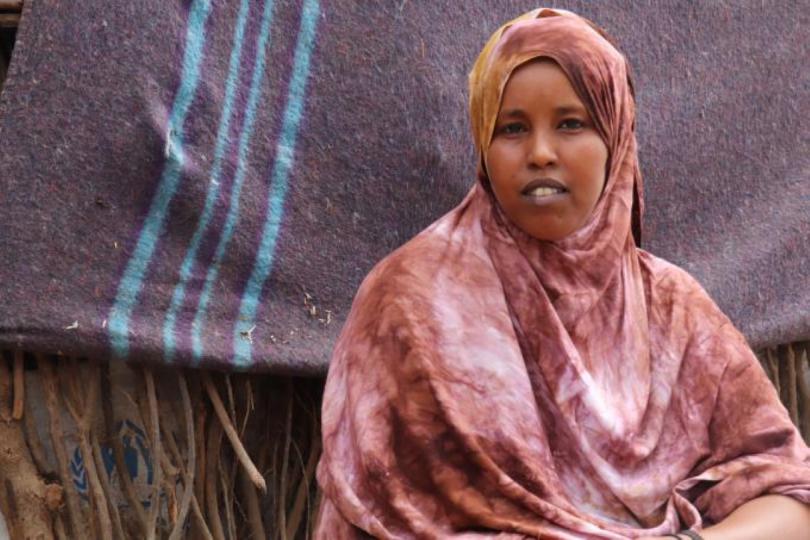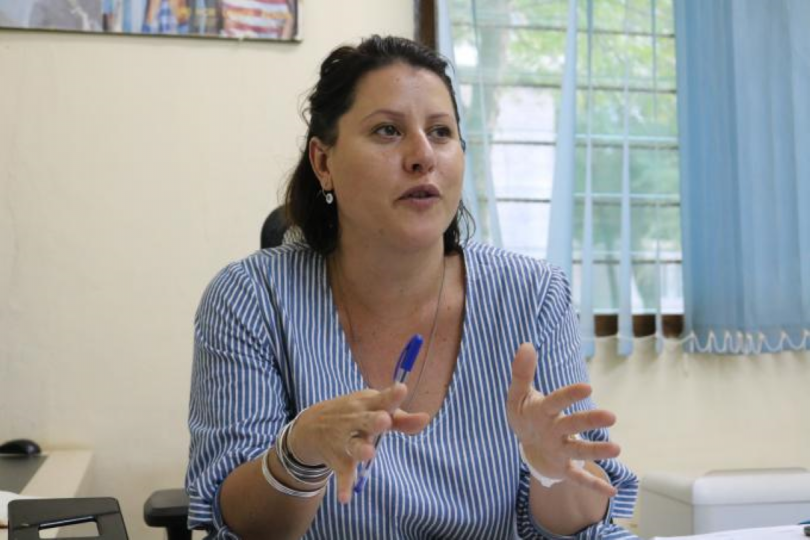WOMEN FOSTERING CHILDREN AT DADAAB CAMP

By Delfhin Mugo
Without parents, unaccompanied and abandoned child refugees are finding love in foster parents, themselves refugees.
The fourth day of April 2012 was a night like many others. The moon was out and the stars were shining brightly. Across many makeshift shelters in the Ifo Camp, one of the three that make the Dadaab Refugee Camp, the 9pm news bulletin was broadcasting on radio. Ms Rahmo Abdullahi was seated in her kitchen, listening to news in Somali language while preparing super for her seven children. Suddenly, there was a commotion outside her house.
RESCUED FROM CATS
It began with the sound of a car pulling over, which was strange because cars are not allowed into the camp beyond certain hours. When she got out to check on what was happening, a white car speeding off. On the ground was a package.
Within seconds, wildcats ran towards the package and started clawing away at it. And then the sharp and wounded cry of a baby rent the air.
It dawned on Ms Abdullahi that the car she saw speeding off had abandoned the baby, whom she swiftly rescued from the cats.
At a nearby health facility, where Ms Abdullahi rushed the newborn for a check-up, she learnt that were it not for her swift action, the baby would have died; the placenta was still dangling freely from the baby’s belly.
CHARMING
After rescuing the child, Ms Abdullahi, gave birth two months later to a baby girl.
“I breastfed the two children; most people think they’re twins,” she says with a smile.
Today, the baby Ms Abdullahi saved from the claws of hungry desert cats is a strong, charming and bubbly seven-year-old boy.
Ms Abdullahi took the baby into her care under a foster care arrangement facilitated by Save the Children, a leading child welfare organisation.
This is a process in which a child is placed with an individual who is not their parent, relative or guardian, but nevertheless is willing to take care and provide for them.
Foster care is not common in Kenya, but at the Dadaab camps, it has been going on since 2008.
Ms Abdullahi is among a group of women refugees who have volunteered to take in children abandoned in the camps and those fleeing the violence that has rocked Somalia since the ouster of former president Siad Barre in 1991. Never mind that they, too, are in difficult situations.
According to Mr Nuuh Tukow, Save the Children’s programme manager for the child protection project, there are 234 trained women on a waiting list, with 184 others already fostering.
COUNSELLING
“They’re trained on positive parenting, non-violent correction mechanisms, and basic counselling, among other skills,” she says.
And that’s not all; they even have a support group that converges every month to discuss the children’s progress, challenges they are facing, and also get to share coping mechanisms.
Citing security concerns, the Kenyan government in 2016 stopped registration of new refugees in the camp, and since then, it has only provided short-term windows for registration.

That, however, has not stopped Somali asylum seekers from streaming in.
The UN High Commissioner for Refugees (UNHCR) estimates that there are more than 15,000 unregistered asylum seekers in Dadaab, most of them children. Without registration, UNHCR says, such children cannot get access to systems and support.
On June 16, the world celebrated the Day of The African Child to mark the 1976 student uprising in Soweto, South Africa, with calls for more serious action and commitment to address the many challenges facing children in the continent.
But perhaps the ongoing review of the Children Act in Kenya, experts say, should provide a chance to ensure children’s rights are upheld in times of humanitarian crisis.
LAUGHTER
Located in the windswept Garissa County, the Dadaab Refugee complex is currently home to 211,544. A majority — 203,758 or 96.3 per cent of the total — are asylum seekers from Somalia. Of these 57.2 per cent are under-18-year-old school-going children.
One of the largest sections of Ifo Camp — the refugee camps are divided into small communities called sections and further into blocks — is led by a democratically elected young woman.
Besides being a leader responsible for the welfare of 14,900 households, Ms Leila Ibrahim, 32, is also a foster mother.
When she opens the gate to welcome her visitors, a team of child protection officers from Save the Children on a routine child welfare check-up, she comes with a small girl in her arms. The two burst into laughter, the result of playful talk.
It is obvious that mother and daughter have a strong bond.

“This is one of the positive signs we look for in our routine visits; you can’t fake it,” says Mr Yussuf Gedi, a senior outreach officer with Save the Children. He adds that the baby Leila is holding is not her biological daughter.
“She is my only source of joy. We share this big compound. I’m not married,” says Leila as the team settles down on a mat.
On a fine morning about two years ago, on her way to hospital, Ms Ibrahim came across a baby abandoned by the roadside, whom she took with her to the hospital before reporting the matter to the authorities.
“She looked very beautiful and I prayed that she would be put under my care,” she says.
PRYERS ANSWERED
Her prayers were answered as a few weeks later, the baby was placed under her care, much to her delight.
While abandonment is one way through which child refugees find themselves without parents, it is not the only one. Some lose their parents and guardians in the camp to death, while others, referred to as ‘separated’ children, just walk up to the camp unaccompanied, thirsty and hungry.
For Mr Mohammed Muse, the pain of losing a kin in the camps is something he knows all too well. He is wearing a sleeveless T-shirt written, “Wheels of Time. 20 years, it’s been a Gas.”
While he dismisses it as purely coincidence, one wonders whether the seemingly innocent message represents the number of years the Form One student has witnessed war tear his country, Somalia, apart, especially since his 20th birthday is fast approaching.
Nevertheless, Muse cuts a sharp and determined look, for a refugee boy who, despite the odds against him, performed fairly well in last year’s Kenya Certificate of Primary Education (KCPE) examination to join Tawfiq Secondary School in Ifo Camp. Muse wants to be an aid worker after school, he says in Kiswahili.
“The pain of children who have lost contact with their parents can only be felt by those who have experienced it. My plan is to help children,” he says.
Muse is a boy struck by more than one tragedy. He lost his father when he was pretty young. Then came the war. To date, he does not know where his mother is, whether she is alive or not.
STEPMOTHER
He came to Dadaab with his grandmother, but she died in the camp in 2014. For the last four years, Muse has been under the care of his stepmother, Ms Zeitun Mohamud, who has ensured he is well-fed, protected and educated.
“Muse is a good boy. He is the brightest boy I have in the family,” Ms Mohamud says.
The teen says he is ready to face the world and wants to join his uncle, who, he learnt, lives at the Kakuma Refugee camp.
According to a 2014 government policy on alternative family care arrangements in Kenya, growing up in a family helps children to develop a sense of self-esteem, belonging, family values, and religious and cultural identity.
Asked about the reason for setting up the foster care arrangement, Mr Tukow, cites the huge caseload of unaccompanied minors and separated children coming into Dadaab.
PASS TESTS
He adds that selecting foster parents is a meticulous process, one based on willingness.
Consequently, interested foster parents here must pass certain tests. A history of child abuse, financial capacity and family composition are among the tests they undergo.
“We don’t want to select someone who has a history of child abuse. We also look at the family composition so that these children are placed in a family that has both male and female caregivers,” Mt Tukow says, adding that the Children’s Department formalises the process.
Mothers who have chosen the fostering path have stories of sacrifice, love and kindness.
Listening to them speak, some with large families, one cannot but wonder why a refugee, whose life is already hard enough, would offer to take in more children. Ms Abdullahi says it is out of love.
“Mothers are different in terms of how they feel about children,” she says: “I have relatives who are not happy with what I’m doing, but that does not bother me.

“I believe I will get my reward from Allah because the Scriptures say if you save one life, you have saved the whole humanity.”
Even though foster parents are provided with income-generating activities and financial support to take good care of the children, it is not a given that they will receive this kind of support. Save the Children is careful not to add incentives to the process, thereby attracting potential abusers.
According to statistics from Save the Children, there are 4,360 unaccompanied and separated children in Dadaab. Out of these, 562 are under foster care.
BURDEN
While these numbers may seem small on paper, it is not until you visit mothers in their homestead that you begin to understand the huge burden on their shoulders.
Ms Abdullahi, for instance, is married with two children and lives with her husband in the camp. However, she has five more children from dead relatives under her care.
The story of Mr Pajouk Lam, a South Sudanese asylum seeker in Dadaab, is even touching.
The 30-year-old father of three, who also lives with two of his siblings and a sister-in-law cares for eight more children from dead relatives.
And, despite the rations from UNHCR, food is never enough to feed his big family.
“Every day I worry about what these children will eat the next day. When they lose their shoes or one needs a pen, they come to me.”
For now, Lam is crossing his fingers as UNHCR considers his case for possible relocation to another country, in a process called Durable Solution. But with several foreign countries shutting down this window, Lam’s chances are slim.
Speaking in her office in Dadaab, Ms Alizee de Lacoudraye Harter, a protection officer with UNHCR, who has worked in other countries hosting refugees, says that the most striking thing about Dadaab for her is the high number of children.
“Out of the total camp population, six out of every 10 refugees are children. That is a lot of people who are coming of age,” she says.
In the recent past, humanitarian emergencies have been on the rise and more and more children are finding themselves trapped in these situations.
While some like earthquakes, tsunamis and floods are natural disasters, others such as armed conflicts and civil wars are man-made and can be avoided.
Even more worryingly, most of these emergencies are happening in Africa. In fact, reports show that one in five children in Africa live in humanitarian settings.
This being the case, aid workers say, the need to keep children safe cannot be overemphasised.
“The children of Dadaab have dreams and aspirations that they would like to achieve just like any other Kenyan child; the children of Dadaab are no different from any other Kenyan child,” Ms Harter says.
She adds: “They want to play, they want to learn, and they want to maintain their friendships, watch football, do their thing with their families and really be in a safe environment.”
This article was first published on the Daily Nation on 8 July, 2019




